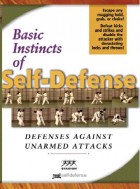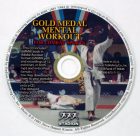Increase mental toughness for fighting and reduce stress response — with physical conditioning
One of the tools of developing mental toughness is physical conditioning. Done correctly, physical conditioning gives a mental edge specific to self-defense. Fighters know that conditioning in itself is a weapon, not just in the physical sense but also in the mental sense. In a conflict a well-conditioned person is calmer than a poorly conditioned one, whose confidence is undermined by observing an unfazed, relaxed, unfatigued opponent. The cool confidence of the well-conditioned opponent grows as the confidence of the poorly conditioned combatant wanes…. And a calm demeanor, expressionless face, and lack of signs of stress are disconcerting to an aggressor. Here is more on the use of physical conditioning for both physical fighting prowess and mental toughness….
Under stress, you will revert to your habits. Habits are formed by repetitions. The more repetitions, the more stable the habit. If your practice is insufficient, or worse, inadequate, under stress you will likely show bad habits, you may even freeze up. So, to show good habits in the face of danger, you may either practice so well that your good habits won’t fail, or … you may reduce your stress response. This can be done through physical conditioning. Yes, conditioning, by reducing your stress response, may compensate for insufficient practice (not frequent enough, not enough repetitions).
Therefore, the best way to ensure that you use your most effective tactics in self-defense is to (a) practice them until they become your nature and (b) train in such a manner that you are not stressed in an “argument” or while under assault.
In striking arts, such as boxing, karate, or taekwondo, long sets of punches, kicks, and combinations are necessary, both for working all the kinks out of the techniques and for ensuring that these techniques will work when fighters are tired or stressed. Similarly, in grappling arts, one has to have the stamina to do hundreds of fit-ins for throws or takedowns during each practice. That is why serious instructors of combat sports and martial arts require students to get in shape before teaching them techniques.
Good physical condition allows doing as many correct repetitions of techniques as it takes to make them effective and reliable. There are more benefits to being in good shape: staying relaxed when fighting (people with low muscular endurance tense more and expend more energy than those with high endurance), the ability to take hard shots on the muscles with less bruising than poorly conditioned people, and self-confidence — bullies find it hard to intimidate people who know they can outdo and outlast the bullies. But when the bullies sense a target’s stress, which means weakness, they grow bold.
Remember: A calm demeanor, expressionless face, and lack of signs of stress are disconcerting to an aggressor. And rational physical conditioning, even nonspecific to fighting, will take you a long way towards reducing your stress response.
Here is a video showing a few physical conditioning drills for fighting and self-defense:
Pay attention to these conditioning drills because I will refer to them when continuing the subject of conditioning for mental toughness in self-defense.
Click here for Part II of this self-defense tip.
Symptoms of stress are the same as those of poor physical conditioning — excessive tension, shallow breathing, sweating, nervousness, being easily startled, poor focus, poor concentration. Such signs tell the attacker that the mark is easy. These signs mean low confidence of the mark, and observing them raises the confidence of the attacker.
Self-defense tip from Thomas Kurz, co-author of Basic Instincts of Self-Defense and author of Science of Sports Training, Stretching Scientifically, and Flexibility Express.
Self-Defense Moves
For your defense moves to work under stress they must be based on your natural, instinctive reactions, require little strength and limited range of motion, and be proven in fighting experience.To learn how your natural reactions can instantly defeat any unarmed attack, see the video Basic Instincts of Self-Defense.
Defend Against Weapons
To defend against weapons you have to know how they are used. Also — every stick has two ends … the weapon of attack may become a weapon of defense in your hand …To learn how the typical street weapons (club, knife, razor) are used by an experienced streetfighter and how to practice with them, see the video Self-Defense: Tools of Attack — Club, Hatchet, Blackjack, Knife, Straight Razor.
Mental Toughness
Staying cool under pressure is more important for self-defense than being physically fit and technically skilled. If you can’t control your mind what can you control?To learn mental techniques that let you calmly face any threat and act rationally in the heat of a fight, click here.
For a complete list of our products, click here.







